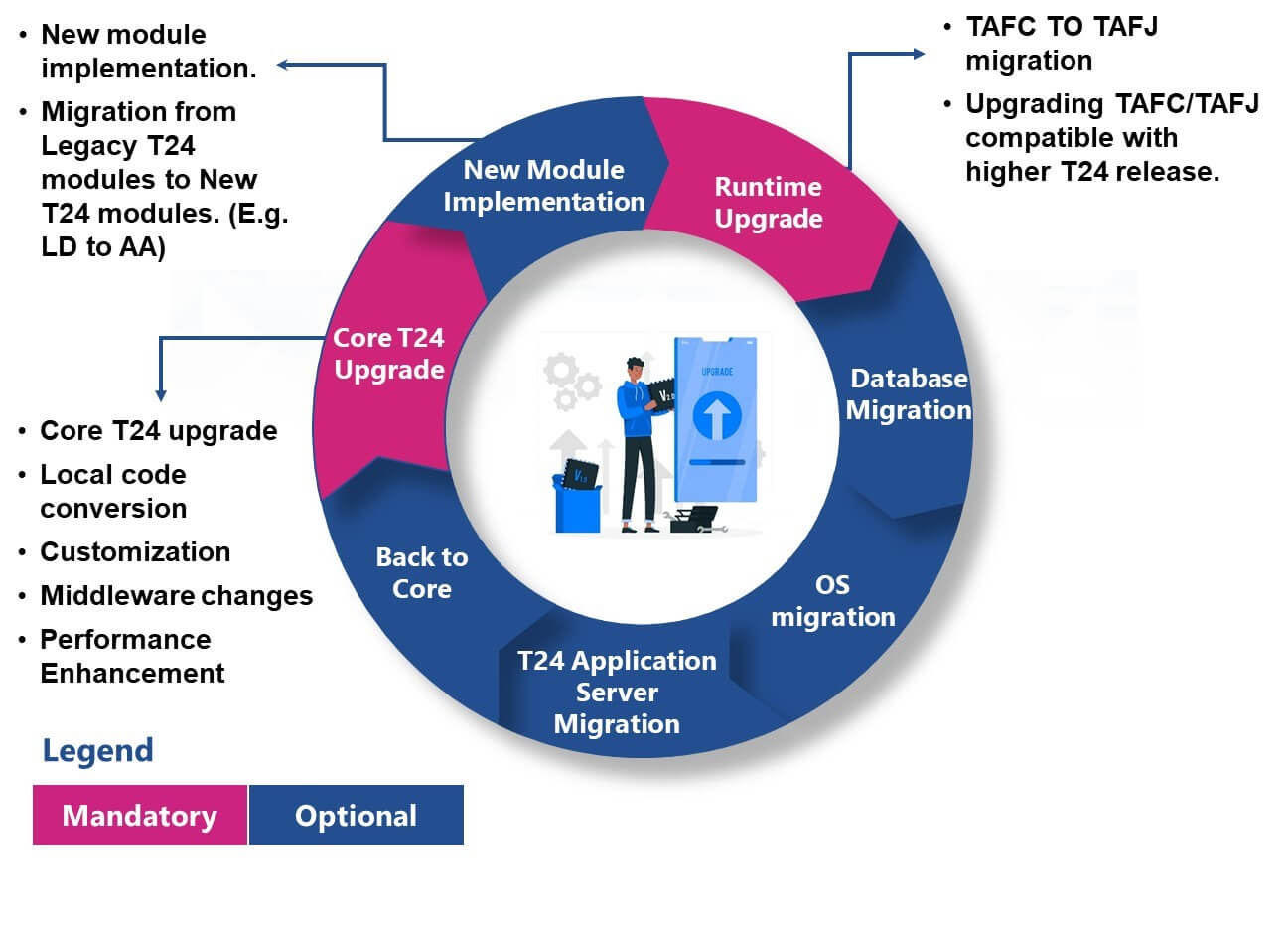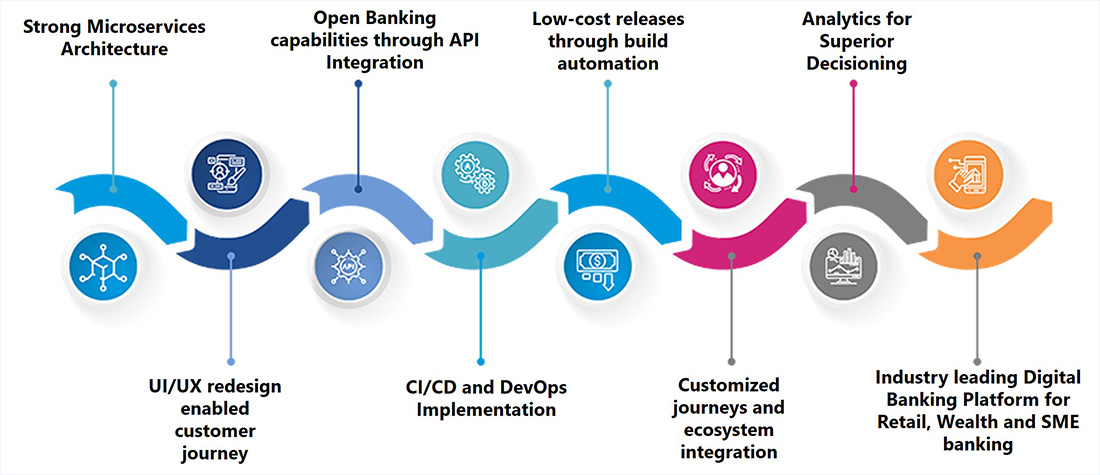Digitalization: The Future of Wealth Management

The wealth management industry is in the midst of a monumental shift due to changing demographics, the influx of new generation potential investors, transitional global scenarios, and most importantly the rampant digitalization. This pace of change has been long predicted but the pandemic has accelerated its adoption, providing continuous opportunities as well as posing new challenges for the wealth managers to sustain, grow, and strive in the market.
Amongst the factors backing the criticality of the digital transformation lie the most persistent and influencing one which is – the changing dynamics of the potential investors. As per a study by Roubini ThoughtLab, almost 50% of the investors are ready to shift if their expectations are not met. The ground is shifting with the wealth getting passed on from baby boomers to Gen-X and millennials. Also, gender is changing with more women investors acquiring responsibility for wealth management, both by inheritance and their own acquisition.
Even the banking leaders like CITI Bank has been vocal about the urgency of digitalizing the wealth management infrastructure to survive and thrive in the coming years and the bold statement by Rodolfo Castilla, Global Head of Wealth Management Products and Platforms, reinstates that digitalization is the future.
“We’re very urgent. We know that if we don’t get there first, we’ll be the ones disrupted and killed.”
This is enough testament to realizing that the only way to move ahead and climb the ladder up for the wealth managers is to go digital and have a smart way to go about it.
Essential and founding principles to drive a successful digital transformation
Before we discuss the value propositions and effective tools for futuristic digital transformation and adoption for the wealth managers, we need to gain an understanding of the base principles that will be central to creating sustainable and smarter digital wealth management capabilities. The wealth managers and management firms need to view these principles as the core values to base their digital strategy upon to reap greater outcomes.
- Inculcate a customer-centric approach: Client-centricity is the most crucial variable in the success of any business digitalization and wealth management is not an exception. Becoming a customer-centric organization would need more than just a sound CRM tool and stunning apps with user-friendly UI.
It needs a far more disciplined approach that sees the client as the foremost pillar of all communications and not vice-versa. The wealth managers need to develop a sound framework to closely understand and comprehend customer journeys to further gain insights into the challenges they face and the solutions they are looking for. A thorough understanding and subsequent anticipation of the client’s need is what will help wealth managers to develop a long-standing and winning digital strategy.
- Focus on multi-generational investor needs: When thinking of the digital-first strategy, some wealth managers only think about the millennial population which is a serious error in judgment on their part. While millennials might hold a larger portion of the client mix, all the other generation clients are also expecting and better responding to digital-first services. As mentioned in the beginning, the women investors are also a chunkier part of the mix due to their growing income levels and inheritance of family money.
In short, the advisors need to build their capacity of addressing the varied investment goals of the multi-generational investors and make, the ‘Family wealth office’ a striking reality backed by customization option for aggregate portfolio management.
- Build your investment models on the outcome instead of product: As a customer-centric, digital-first wealth management service provider, it is imperative to build goal-oriented products with room for personalization. The wealth managers will need to break away from the traditional product-based selling approach and will need to sell outcomes in order to derive a greater audience and close better deals.
The firms should proactively start experimenting and building their outcome-based portfolios that successfully meet the varied short term and long term objectives of their clients.
- Rethink efficiency and drive agility through automation: The banking and financial sector require more complex and advanced technological solutions as compared to any other industry and therefore, a large amount of data analyses and development of a collaborative and secure ecosystem becomes of utmost importance for wealth managers to bring efficiency and agility in their business.
They will need to closely assess and build automation capabilities that maintain and further strengthen their business value set along with helping the clients to smoothen and fasten the processes.
Think omnichannel – choose a hybrid approach
Go digital but do not forget the human value.
Omnichannel wealth management services are the perfect middle-ground enabling the best of online and traditional face-to-face services. The client of today needs a more DIY-based model with various touchpoints and 24×7 services, making omnichannel a norm for the digitalized world.
Areas that can be automated and delivered through automated channels require robust AI capabilities whereas areas of personalized and holistic advice should be reserved for the human advisors. Hence, exploring a hybrid-advice model wherein the wealth manager can combine the best of Robo and human services to lead a more successful digital path.
Key areas for digital-first initiatives and vital tools for their implementation
Now that we have discussed the prerequisites for digital transformation, let us shed some light on the crucial areas for digital adoption and the most popular, trusted, and safe tools to implement the same.
- Credit decisioning: Covering all the lending products in retail and corporate along with all the risk assessment needs and portfolio analysis, credit decisioning and its management can be automated using AI-driven platforms like Kabbage, Capitalfloat, Ondeck, Fundbox, Fundingcircle and XAI platforms like Google, Thales XAI, Rules AI, AI explainability 360, Temenos XAI.
- Customer analytics: For any strategy to work, customer journeys need to be studied and analyzed deeply to understand customer needs, wants, and expectations. There are multiple data analytics platforms like Monkeylearn, Lexalytics, Meaningcloud Rosette, Clarabridge, etc. for the fintech sector that can be used for successful tracking and mapping of customers.
- Fraud management: Security of financial transactions and confidential information is the number one concern and the most important factor to consider when going digital. There are multiple payment gateways and security-enriching platforms like Fraud.net, PayPal commerce platform, Matlab, SEON fraud fighters, Simility, Feedzai that offer effective prevention from frauds on payments of all types.
- Client due diligence: In the absence of personal touch and wider geographic penetration through online services it becomes important to leverage the use of optimized solutions for CDD. Microsoft Computer Vision, Amazon Rekognition, Google Cloud Vision, DeepPy, Nanonet, and the like can be really effective in offering effective CDD solutions.
- Interactive engagement: Adding a human dimension to all the digital channels enable better personalization of services and tools like Video API-Vonage, EnableX, Mux; Hybrid chat- Liveperson, Now, Rulai, Manychat, Bant, etc., are great assets to enhance the human capabilities of the digital approach.
Conclusion
Client-centric, advice-oriented model will form the backbone of digitalization for wealth managers looking to thrive in the near future, and adopting a hybrid strategy that intermingles automation with the human touch will ensure greater success and wider innovation driving enhanced customer experiences. Maveric’s proven record in developing and offering best-in-class fintech solutions can help the wealth managers in achieving unprecedented digital growth through a cost-effective and optimized model.
This article was originally published on Outlook Money
View







